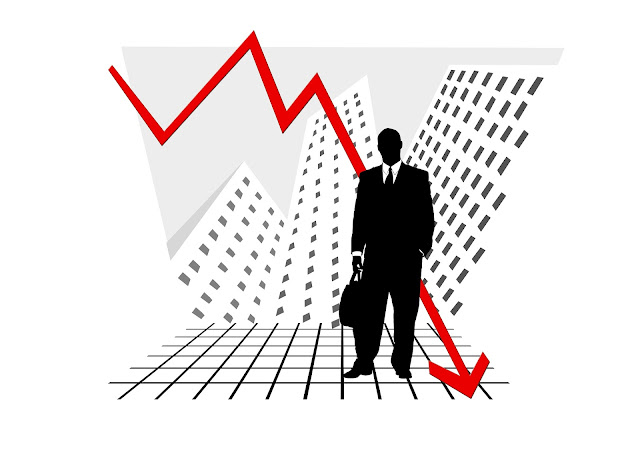Why is India’s growth slowing
Why is India’s growth slowing
Why is India’s growth slowing CNBC Explains India is one of the world’s fasting growing economies. It had been touted as an economic and geopolitical counterweight to China.
GDP OF INDIA
So what’s causing the slowdown, and how can it be reversed?Since the turn of the century, India’s economy has grown at a rapid rate, helping transform the country.
Between 2006 and 2016, rising incomes lifted 271 million people out of poverty, meaning the proportion of Indians still living in poverty has fallen dramatically, from around 55% to 28%.
Access to electricity has also improved. In 2007 just 70% of the population had access to power. By 2017, that grew to nearly 93%.
Why is India’s growth slowing
More recently, the Indian government constructed around 110 million toilets -- a huge step towards better sanitation designed to prevent the practice of open defecation. It's a signature program of Prime Minister Narendra Modi, known as Swachh Bharat, or Clean India.All this development has been supported by a booming economy, but as of late, that expansion has begun to run out of steam.
In the third quarter of 2019, India’s economic output grew by 4.5% - making it the first time the country’s growth dipped below 5% since 2013.
For context, 4.5% growth is still much higher than that of developed economies like the U.S.
But with 12 million Indians entering the workforce every year, economists say the country needs annual growth rates to stay above nine percent to ensure there are enough jobs.
So, what’s causing this recent slowdown?
Well, government officials argue turbulence in international financial markets is at fault.
Political uncertainty and U.S.-China trade tensions mean confidence levels among investors
and consumers everywhere have sunk.
The United Nations has even warned that a global recession in 2020 is now a ”clear and present danger.“
But back to India - many economists say the country's growth problems are actually self-inflicted.
One obvious culprit is the shadow banking sector.
Why is India’s growth slowing
During the 2000s, India saw an investment boom. It was fuelled by state banks dishing out a load of loans for big infrastructure projects.But some of the companies taking advantage of these loans couldn’t keep up with the repayments. That meant the state banks weren’t getting paid back and therefore struggled to give out new loans.
To keep business moving, shadow banks stepped in.
These financial institutions, which operate like ordinary commercial banks but don’t follow traditional banking rules, eventually made up an estimated third of all new loans nationwide.
The loans played a pivotal role for the millions of small businesses and consumers who would otherwise have no access to credit.
But in 2018, shadow banking giant Infrastructure Leasing & Financial Services defaulted on its debt repayments. Its collapse sent shockwaves through the economy and shook up more traditional banks that had supported the sector.
This had a ripple effect. It became harder for people to buy expensive items like cars.
- UN forecasts lowest global GDP growth since financial crisis
- How to increase GDP Growth to 10% in 2 Months
Why is India’s growth slowing
That hurt India’s automotive industry, which is one of the country’s biggest.It employs about 35 million people and makes up about 7% of India’s GDP. Last summer, the industry suffered its worst sales performance in nearly 19 years, and reports suggest tens of thousands of workers have been laid off.
The agriculture and construction sectors have also been hurting, with small and medium businesses being hit the hardest.
The country’s unemployment rate has been on an overall upward trend since July 2017, rising several percentage points to 7.7%.
Higher unemployment means consumers are buying less, leading to the unfortunate cycle of slower manufacturing, production, investment, and job creation.
A survey from the Reserve Bank of India found consumer confidence has fallen to its lowest level in five years. But Indians still have a positive outlook for the future, with most consumers expecting to feel more optimistic in a year.
However, if things don’t improve, debt could become another issue.
Why is India’s growth slowing
Expecting better days ahead, many households have continued to spend, by taking out loans and dipping into savings.Household savings as a proportion of GDP has fallen from 23.6% to 17.2%.
Meanwhile, household debt has surged to 10.9% during the same period.
Critics say the government in New Delhi has failed to spot these risks and hasn’t done enough to get the economy moving again.
The Reserve Bank of India's former governor Raghuram Rajan recently blamed the lack of significant reforms and a slowdown in investments since the global financial crisis.
Even the country’s chief economic advisor recently admitted reforms are needed to make India more friendly to investors. India has cut its corporate tax rate, but labor and land laws are still extrem
Why is India’s growth slowing
Why is India’s growth slowing
 Reviewed by Business Opportunity in Maharashtra बिझनेस अपॉच्यूनिटी इन महाराष्ट्र
on
January 19, 2020
Rating:
Reviewed by Business Opportunity in Maharashtra बिझनेस अपॉच्यूनिटी इन महाराष्ट्र
on
January 19, 2020
Rating:
 Reviewed by Business Opportunity in Maharashtra बिझनेस अपॉच्यूनिटी इन महाराष्ट्र
on
January 19, 2020
Rating:
Reviewed by Business Opportunity in Maharashtra बिझनेस अपॉच्यूनिटी इन महाराष्ट्र
on
January 19, 2020
Rating:

No comments